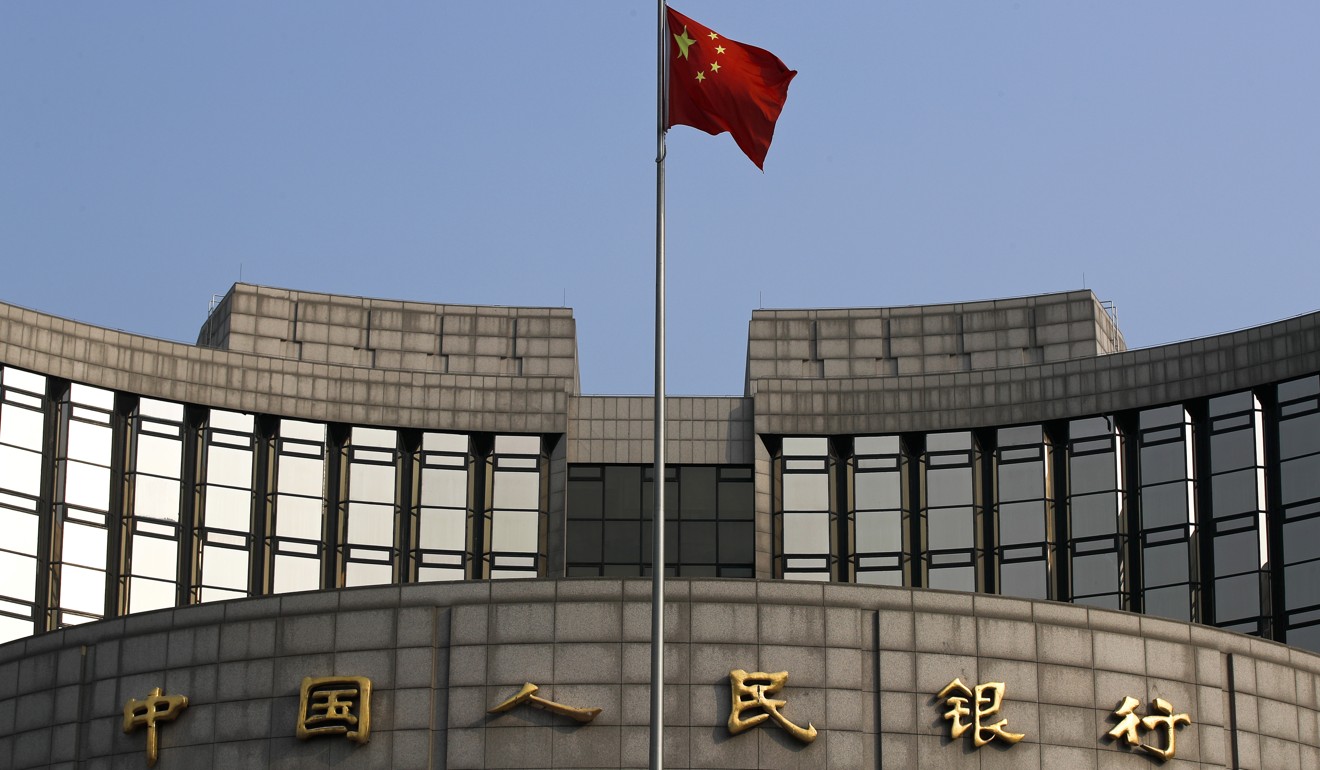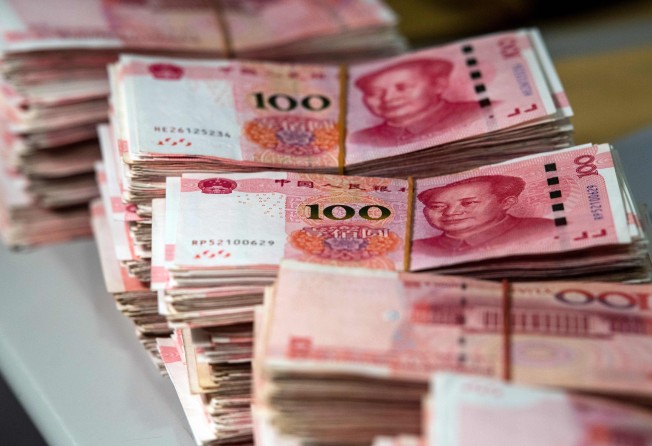
China may be banking on market reforms rather than interest rate cuts to boost growth, analysts say
- Comments by People’s Bank of China governor Yi Gang seen as giving no hint of imminent benchmark interest rate cut
- Analysts continue to see government relying on tax cuts and infrastructure spending, rather than easier monetary policy, to stabilise growth

Plans by China’s central bank for financial market reforms suggest it is unlikely to start cutting benchmark interest rates in the near future despite domestic demand and economic growth continuing to weaken, analysts said.
People’s Bank of China (PBOC) governor Yi Gang said on Sunday that the central bank would pursue structural reforms to increase market competition in setting lending rates that would result in lower real financing costs, especially for small and micro private sector enterprises.
In particular, breaking up banking monopolies, improving bankruptcy laws and stricter enforcement of financial regulations could increase price transparency and reduce administrative fees, Yi said.
China’s banking sector is dominated by the big four state-owned lenders – the Industrial and Commercial Bank of China, the China Construction Bank, the Agricultural Bank of China and the Bank of China – which generally avoid lending to small and medium-sized businesses because of the greater risk involved. They prefer lending to big, state-owned enterprises not because they are more efficient but because their loans carry the implicit backing of the mainland government.

Chinese officials have long said they would reform the financial sector to make it more market driven, but Yi’s comments, in the middle of a trade war with the United States, suggest he sees reforms as a better path than aggressive monetary easing to help stabilise the economy.
“At a time when the US is demanding that China keep the yuan exchange rate stable, China wants the US to know it is avoiding aggressive monetary policy easing which could exert depreciation pressure on the currency” said Nathan Chow, economist at DBS Bank.
“So China is trying multiple tools, [such as] administrative guidance and market reforms, to channel money into the real economy before deciding if an interest-rate cut is really needed as a last resort.”
As China ramps up its fiscal stimulus programme, the central bank faces the tricky task of helping to ensure that an economic recovery starts soon while avoiding a further build-up of risky lending and debt.
Data last week showed China is on the brink of slipping into producer price index deflation, due in part to weak domestic demand. Most other data so far does not point to a near-term economic recovery.
China is trying multiple tools, [such as] administrative guidance and market reforms, to channel money into the real economy before deciding if an interest-rate cut is really needed as a last resort.
But optimism is rising that China and the US can reach an agreement to end their trade war in coming month, or to at least scale back trade tariffs. In this environment, analysts do not expect significant further monetary easing this year.
Analysts expect two half percentage-point cuts this year in the amount of money banks are required to hold in reserve at the central bank after cutting the reserve requirement by a full percentage point in January and two-and-a-half percentage points last year. The central bank may not even cut by that much, judging by comments at the National People’s Congress (NPC) since last week.
Yi said that even though the central bank had been pumping money into the banking system which resulted in lower funding costs for banks and falling benchmark 10-year sovereign bond yields, lenders were still extending expensive loans to small and private enterprises because of structural issues.
The PBOC governor added that China still has room to cut in banks’ reserve requirement this year, though less than in previous years, noting that the current level of China’s reserve requirement is not high compared with other large economies.
Premier Li Keqiang made clear in his report to the NPC last week that the government would rely on fiscal policy – tax cuts and greater project spending – to boost growth, while monetary policy remained “prudent.”
In line with that policy, Yi made no mention of a possible cut in the PBOC’s benchmark interest rates for lending or bank deposits, which would be an aggressive easing of monetary policy.
“The PBOC’s statement hinted that it has no intention to cut banks’ benchmark lending rates in the near term,” said Carol Liao, senior China economist at JP Morgan. “Meanwhile, we expect infrastructure fixed asset investment to recover in the coming months as the [government] supports kick in.
“Fiscal policy will likely take the front seat to stabilise growth, with the focus on tax cuts, along with moderate support for infrastructure.”
The central bank seems to be taking a cautious stance about the surge in bank lending that occurred in January, even as the government presses state-owned banks to extend more loans.
The PBOC’s statement hinted that it has no intention to cut banks’ benchmark lending rates in the near term.
Indeed, new bank lending in China fell sharply in February as the government took action to dampen speculative short-term lending after net loans hit a record high the previous month. Analysts have said that much of the short-term lending in January was used by speculators to buy into the sharp run-in the Chinese stock market.
“We see the slowdown in credit growth as a result of a less supportive policy stance, which is in turn affected by a rapid rebound in the equity market which started to pose the threat of a repeat of the 2015 boom and bust,” said MK Tang, China economist at Goldman Sachs.
“While there are technical reasons such as the timing of the [Lunar] New Year [that may affected new lending in February], if the government wanted they could have kept the liquidity supply loose despite these reasons if the economy and markets were very weak and trade talks weren’t progressing well.”